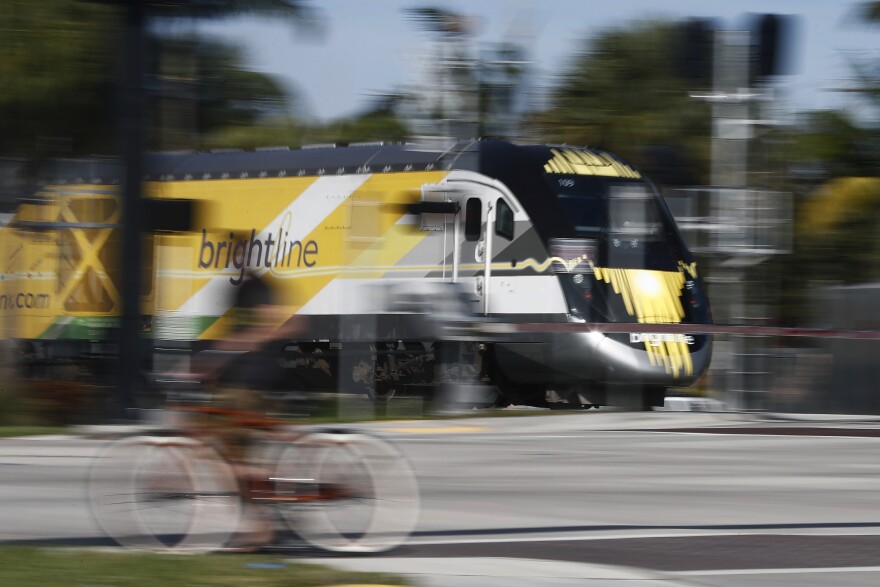More passengers were riding Brightline trains between South Florida and Orlando last month, but they weren’t paying more than they were a year ago.
The private passenger train service has been trying to shift its customer mix to serving more long haul riders and the higher fares they pay compared to passengers riding between stops in South Florida. The focus on longer rides and higher fares is an effort to improve the company’s financial performance as it looks to sell some of itself to outside investors.
Total ridership was up 16% in July compared to a year ago, according to Brightline’s monthly revenue and ridership report released for its lenders. July was a record month for long haul passengers.
Despite a jump in passengers between stops in South Florida, average fares for those short haul trips fell by 10%. Long haul fares were up only 2%. And year-to-date, average fares are essentially flat through the end of July. Brightline made changes to its premium and commuter passes in the past year, including ending its 40-trips for $399 commuter program. At the time, it said it was freeing up seats to sell for longer trips.
It announced a fare program aimed at South Florida passengers in May beginning at 10 rides for $239. That represents a single fare that is more than double its previous commuter discount offer.
“We plan to restore the commuter business to historic levels over the next several months,” the company wrote in its July financial update.
July marked Brightline’s first full month of running longer trains. Six-car trains were on the tracks. Longer trains means Brightline has more seats to sell. Most of the longer trains run the full length of Brightline’s service – between South Florida and Orlando.
July's average fares were up slightly from June, ending a three month slide.
Credit rating agencies downgraded their assessments and outlooks for Brightline’s IOUs in recent months. S&P Global and Fitch Ratings each rank Brightline’s bonds in junk territory, the highest risk general category for bonds.
“We are monitoring the impact of additional cars on ridership and reported capacity constraints” Fitch Ratings lead analyst Ben Munguia said. “While short-distance ridership has been flat, long-distance ridership has been growing year-over-year, which is a positive development.”
READ MORE: Brightline's fares fall along with its credit rating
Bond analysts have noted Brightline’s ridership and revenues have been falling short of projections, leading to growing concerns about its billions of dollars in borrowing by the company. It deferred interest rates on some of its bonds this spring and raised the interest rate for others to attract investors.
For months, Brightline has been working to sell what it calls “a substantial amount of equity” in the firm. The money raised by selling some of the company to an outside investor or investors would be used to pay back some of its bonds and to boost its financial reserves, addressing another growing concern among credit analysts.
Meanwhile, Brightline has been sued by its former partner company, Florida East Coast Railway. Florida East Coast owns the tracks upon which Brightline runs its passenger trains. The track owner accesses Brightline of “clandestinely” negotiating a plan with Miami-Dade County to have more commuter trains use the rails.
Earlier this month, U.S. Transportation Sec. Sean Duffy pledged to eliminate deaths involving Brightline trains. A WLRN/Miami Herald investigation found that Brightline trains have killed 182 people since the service started with test runs in 2017, making it the deadliest passenger rail service in the country.






